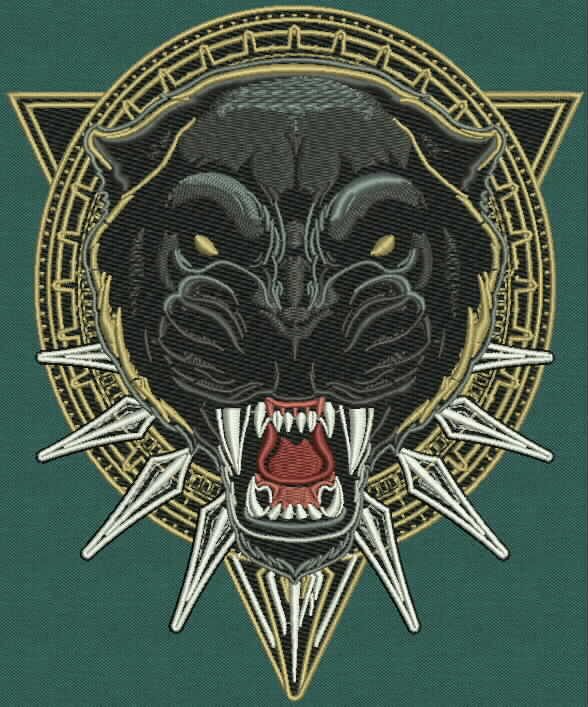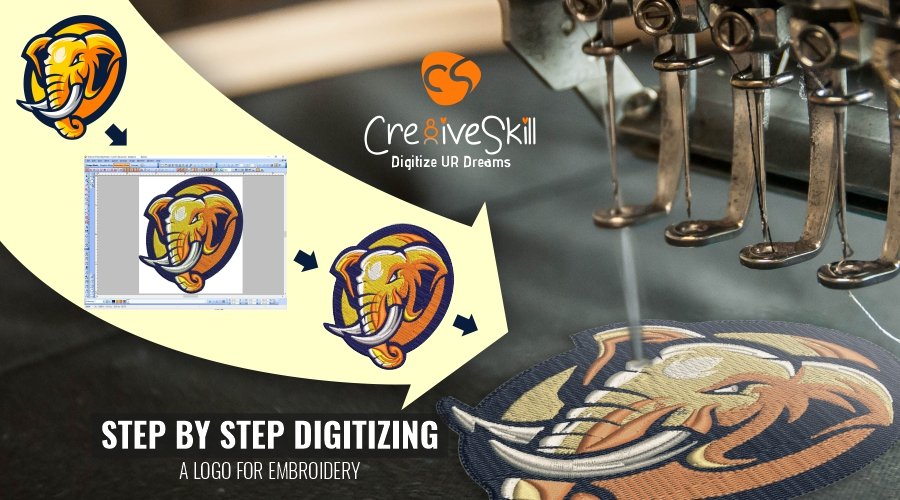Mastering the Needlework Digitizing Process: Your Ultimate Overview
Embroidery digitizing is a careful craft that needs precision and knowledge to convert complex designs right into digital styles for maker needlework. As artisans embark on this trip to understand the needlework digitizing process, a thorough understanding of the basics establishes the structure for quality. Nevertheless, past the rudimentary knowledge lies a realm of innovative software, specialized tools, and nuanced techniques waiting to be discovered. By diving into the subtleties of digitizing, one can open a world of creative opportunities and boost their embroidery jobs to new heights.

Comprehending Needlework Digitizing Fundamentals
Needlework digitizing essentials create the foundation whereupon elaborate layouts are translated right into machine-readable formats for specific stitching. This preliminary action in the needlework digitizing process is essential for guaranteeing that the last embroidered item is a faithful representation of the original layout. Comprehending needlework digitizing fundamentals involves grasping essential ideas such as stitch types, stitch direction, density, rug, and pull payment.
Stitch types play a crucial function in establishing the aesthetic and textural end result of the stitched design. By choosing the ideal stitch kind, whether it be satin, fill, or running stitch, digitizers can achieve the desired result and enhance the general high quality of the needlework. Furthermore, sew direction influences the flow and dimension of the layout, while density determines the spacing and protection of the stitches.
Furthermore, rug sewing gives stability to the style by securing the fabric and protecting against distortion during the embroidery procedure. Pull payment is one more essential consideration to neutralize the natural tendency of material to contract when sewn. Mastering these embroidery digitizing basics is essential for producing professional-quality stitched items.
Choosing the Right Digitizing Software Program
Picking the appropriate digitizing software application is a critical decision that considerably influences the performance and quality of the needlework digitizing procedure. Digitizing for Embroidery. When selecting the ideal digitizing software program, it is important to take into consideration variables such as the intricacy of styles you prepare to develop, the user-friendliness of the software application, the level of customer support used, and the compatibility with your needlework machine
There are various digitizing software application alternatives offered in the market, ranging from fundamental programs for newbies to innovative software application for specialist digitizers. Some preferred options consist of Wilcom EmbroideryStudio, Hatch Embroidery Software Program, and PulseID. These software program bundles use a vast array of tools and features to help you develop elaborate layouts effortlessly.
Prior to deciding, it is a good idea to explore the different software choices through free tests or demonstrations to figure out which one finest fits your needs. In addition, checking out evaluations and looking for recommendations from seasoned digitizers can provide valuable insights into the strengths and weak points of each software program bundle (Digitizing for Embroidery). By thoroughly assessing your demands and comparing the functions of different digitizing software, you can make an enlightened selection that boosts your needlework digitizing workflow
Digitizing Tools and Strategies

Optimizing Style Settings for Embroidery
Mastering the complexities of style setups is fundamental in achieving optimum results in the needlework digitizing process, building upon the structure laid by recognizing digitizing devices and techniques. When maximizing design setups for needlework, it is important to take into consideration factors such as stitch type, density, rug, pull settlement, and enrollment. Registration settings line up various components of the layout properly, preserving overall layout integrity.

Troubleshooting Common Digitizing Issues
When running into common digitizing problems during the needlework procedure, it is vital to recognize the root causes and carry out efficient remedies promptly. One common issue is stitch density concerns, where stitches might be also dense, triggering the material to tighten, or too thin, resulting in pop over to this web-site spaces in the layout. Readjusting the stitch density setups in the digitizing software can help settle this issue.
One more regular obstacle is string breaks during the needlework procedure. This can occur as a result of numerous reasons such as incorrect stress setups, boring needles, or making use of low-quality string. Ensuring appropriate upkeep of the needlework equipment, including regular needle adjustments and tension changes, can reduce the event of thread breaks.
Additionally, style enrollment mistakes can cause misaligned elements within the needlework style. Checking the look at here now layout placement in the digitizing software program and making essential changes prior to sewing can help in avoiding this problem. By dealing with these usual digitizing issues without delay and efficiently, you can ensure a smoother embroidery procedure and high-grade completed items.
Verdict
Finally, grasping the needlework digitizing process needs a solid understanding of the essentials, the ideal option of software application, and knowledge of tools and techniques. Optimizing style settings and fixing usual digitizing issues are vital actions in guaranteeing high-grade embroidery results. By adhering to these steps faithfully, one can attain accuracy and performance in the digitizing process.
Comments on “Top Notch Digitizing for Embroidery: Expert Craftsmanship”